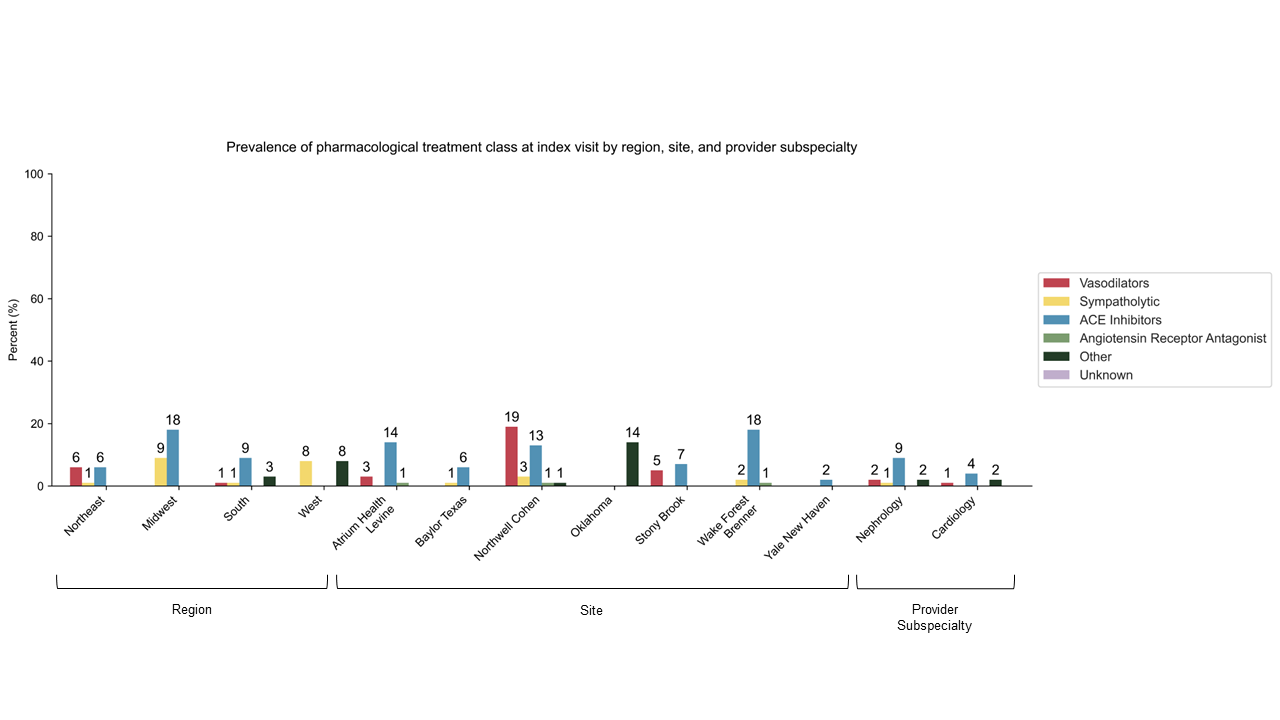Hypertension
Session: Hypertension
64 - Baseline Pharmacological Treatment and Nutrition Referral Across US Regions and Study Sites in Youth Referred for Subspecialty Management of Hypertension Disorders: A SUPERHERO Registry Analysis
Sunday, May 5, 2024
3:30 PM - 6:00 PM ET
Poster Number: 64
Publication Number: 64.2216
Publication Number: 64.2216
- RM
Robert Moy, MD (he/him/his)
Pediatric Resident
Levine Children's Hospital
Charlotte, North Carolina, United States
Presenting Author(s)
Background: There is a paucity of data from clinical trials to inform the development of best practice guidelines for initial pharmacologic management of hypertension in youth. Moreover, with the increase in prevalence of primary hypertension, nutritional management is key to achieving blood pressure control.
Objective: To investigate differences in prescribing patterns of pharmacologic therapy and nutritional referrals between US Census regions and sites.
Design/Methods: This is a cross-sectional analysis of baseline data from 8 sites from Phase 1.1 of The Study of the Epidemiology of Pediatric Hypertension (SUPERHERO) Registry, a multisite retrospective study of youth referred to subspecialty care for hypertension disorders using electronic health record data. Inclusion criteria were an initial subspecialty clinic visit for hypertension disorders identified by ICD-10 codes from 1/1/2016–12/31/2022 and age < 19 years. Exclusion criteria were kidney failure on dialysis, kidney transplantation, or pregnancy by ICD-10 codes. Our exposures were U.S. Census region based on participants’ home address at the index visit and site. The outcomes were orders placed for nutrition referral, prescription of antihypertensive medication, and class of medication prescribed. We estimated the associations using unadjusted generalized linear models in this descriptive analysis.
Results: Of the 10,968 participants, mean age was 12.5 years and 62% were male (Table 1). Regional distribution included 59% in the South, 13% in the Northeast, and < 1% in the Midwest and West. The most commonly prescribed class of antihypertensive therapy was angiotensin converting enzyme inhibitors. Participants in the Midwest were more likely to be prescribed antihypertensive therapy compared to the Northeast; participants in the South were more likely to receive nutritional referral than the Northeast. Cardiology was less likely to prescribe antihypertensives or refer to a dietician or weight management clinic than nephrology. General pediatrics was more likely to refer to weight management clinic than nephrology (Table 2).
Conclusion(s): In a large multisite cohort of youth referred for hypertension disorders, we observed significant differences in management practices based on region and site. These differences in prescription patterns and nutritional referrals could have significant implications for quality of care and achieving blood pressure control in this population. Ongoing studies including assessing the impact of health care disparities are required to better understand these differences and improve care in youth with hypertension disorders.
.png)

.png)
